Town's 1646 witchcraft trial ordeal re-enacted
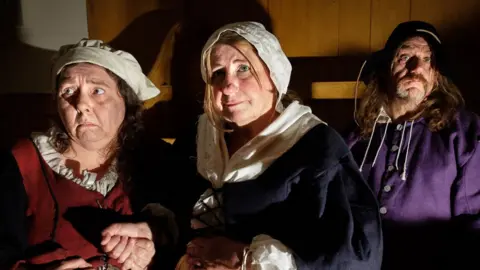 John Beardsworth
John BeardsworthWhen nine Huntingdonshire people were accused of witchcraft in 1646, during the English Civil Wars, their accusers knew who to turn to for help - Witchfinder General Matthew Hopkins.
The six women and three men found themselves on trial for their lives - four of them would be found guilty and hanged.
The Civil Wars saw a "resurgence in witchcraft accusations" when "people were looking around for someone else to blame for their ills", said historian Stuart Orme.
The group's ordeal is being re-enacted on Saturday and Sunday in Huntingdon's Georgian courtroom, on the site of the building where the 17th Century trial took place.
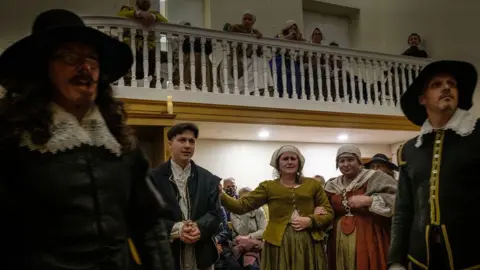 John Beardsworth
John Beardsworth"For many people, the Civil War was the world turned upside down, times were hard, the harvest was failing because of poor weather, thousands of people had died in the wars or of war-related disease," said Mr Orme, curator of The Cromwell Museum in Huntingdon.
They wanted someone to blame and, in an era when most people believed in witchcraft, the focus turned to those on the edges of society.
"In 90% of cases, those accused were women - they tended to be the poorest in society, they depended on the parish poor rate and were resented for that and they would be blamed for things like cursing animals or children," he said.
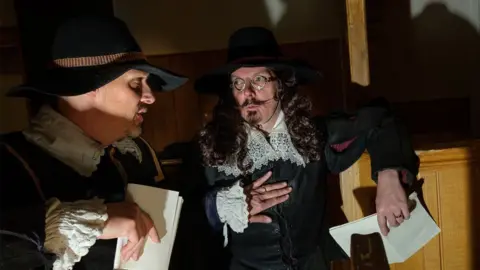 John Beardsworth
John BeardsworthThe nine, who were all from "a very humble background", were put on trial in 1646, during the 18 months in which Matthew Hopkins was active across East Anglia.
Hopkins accused "about 300 people of witchcraft and over 100 are executed", Mr Orme said.
The historian added: "If he is known at all, it's from the 1960s' horror film with an elderly Vincent Price, but the real Witchfinder General is only 25 years old when he begins his career."
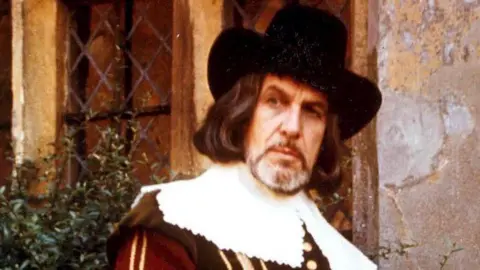 Tigon Film Productions
Tigon Film ProductionsHopkins made his first accusations in Manningtree, Essex, and from there his career took off, using brutal methods.
"The accused would be imprisoned, deprived of food, sleep, water, clothes, even the ability to sit down or lie down or sleep, and then after three or four days of this, whilst being harangued and interrogated, most people will crack and confess simply to make it stop," Mr Orme said.
The re-enactments are based on a pamphlet about the Huntingdonshire trial, recorded by John Stern from Hopkins' team.
One of the accused "mutters under their breath all the time", another is described as "a sottish [drunk] woman".
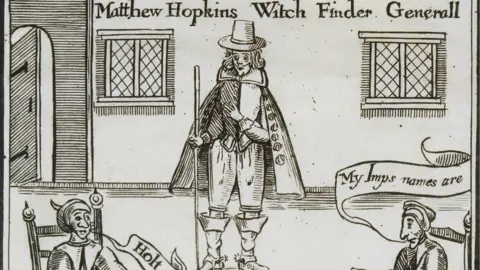 Getty Images
Getty ImagesHowever, the vicar of Great Staughton, Cambridgeshire, was deeply disturbed when he witnessed Hopkins' methods in Huntingdon and wrote a pamphlet condemning him.
Mr Orme said: "He's asking, 'How can you have a fair trial when these people are being tortured?' Torture is against English common law, it's illegal."
This led to a campaign against Hopkins and within a few months his activities ceased. He died the following year.
With the first Civil War (1642-1646) coming to an end, life began returning to normality and the witchcraft hysteria of the mid-1640s faded away.
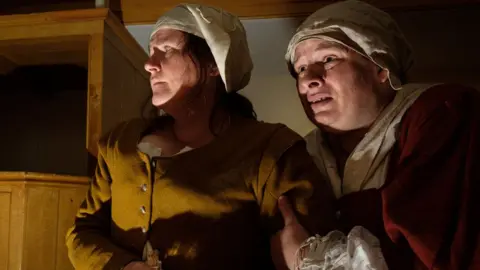 John Beardsworth
John BeardsworthFollow Cambridgeshire news on BBC Sounds, Facebook, Instagram and X.
